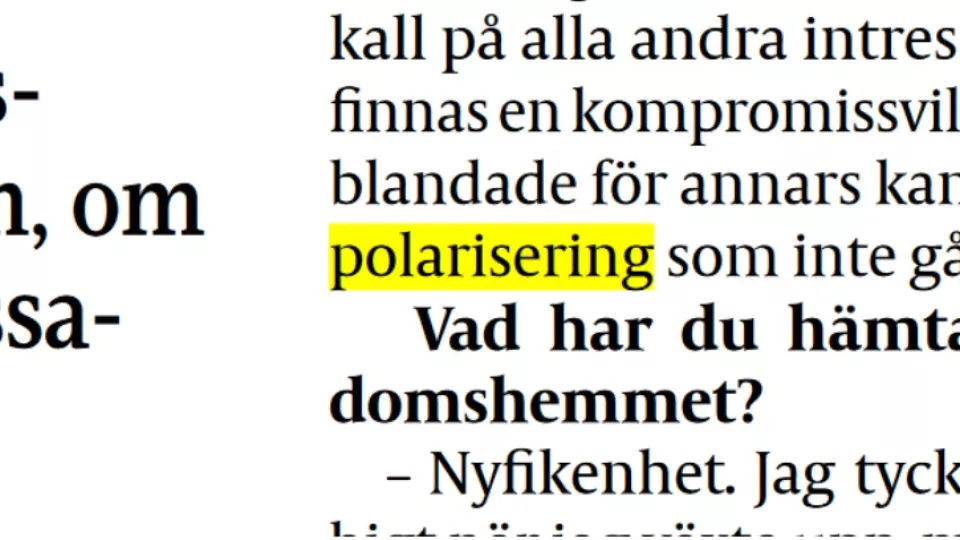Nils Gustafsson and Anamaria Dutceac Segesten contributed to an article studying the use of the word "polarisation" in Swedish newspapers and magazines in the 2010s by combining rhetorical analysis and computational methods. The term increased four-fold in use in print media between 2010 and 2021, occurring almost 33,000 times. The increase was particularly apparent in 2016, coinciding with the United States presidential election and the arrival of a comparatively large number of refugees from Syria to Europe.
The researchers found that the meaning of polarisation changed gradually over the 2010s. At the beginning of the decade, writers used it to describe specific situations or debates characterized by conflict. From 2016, the meaning of the word became vaguer and more ambiguous, and polarisation instead became a way to amplify narratives rhetorically.
"… understood as a trait of contemporary society, it can divert attention from the realities of conflict. Used in this manner, the term can shape the view of conflicts as expressions of polarisation, rather than polarisation as the expression of material or political disparities," write the researchers.
About half the time, Swedish media used polarisation in contexts of American politics. The rest of the occurrences concerned all other countries or related to Swedish politics.
The researchers studied the meanings Swedish newspapers assign to polarisation and how writers use it. The study found a clear distinction between how Swedish writers use the word depending on whether the text concerns an issue in the United States or Sweden. In stories on American society and politics, the language framed polarisation as affective, expressing negative opinions of political opponents and outgroups. Newspaper content on political and social issues in Sweden commonly framed polarisation as an ideological distance between policy preferences.
"We can conclude that Swedish media coverage most prominently depicts the US as a locus of polarisation, and that it describes American polarisation as primarily affective. In contrast, Swedish politics is not framed as being as polarised as in the US; when occurring, polarisation in Sweden happens along issue lines such as the income cleavage or immigration," write the researchers.
Significant increase of "polarisation" in Swedish newspapers

The frequency of the word "polarisation" in Swedish news media increased by 300% between 2010 and 2021. In the same period, the term's definition evolved, and its contextual meaning would differ depending on whether the context was Swedish or American.

